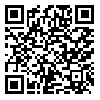BibTeX | RIS | EndNote | Medlars | ProCite | Reference Manager | RefWorks
Send citation to:
URL: http://journal.zums.ac.ir/article-1-876-en.html

 , Seyed hamoon Sadraie *2
, Seyed hamoon Sadraie *2 
 , GHolam Reza Kaka3
, GHolam Reza Kaka3 
 , Mahvash Jafari4
, Mahvash Jafari4 
 , Mehdi Saberi5
, Mehdi Saberi5 
 , Mohammad Hasan Hossini Akbari6
, Mohammad Hasan Hossini Akbari6 
 , Hosein Dashtnavard3
, Hosein Dashtnavard3 
 , Ali Pandoeh7
, Ali Pandoeh7 

2- Dept. of Anatomy, Baghiyatallah University of Medical Sciences, Tehran, Iran ,
3- Dept. of Anatomy, Baghiyatallah University of Medical Sciences, Tehran, Iran
4- Dept. of Biochemistery, Faculty of Medicine, Baghiyatallah University of Medical sciences, Tehran, Iran
5- Dept. of pharmacology, Faculty of Medicine, Baghiyatallah University of Medical sciences, Tehran, Iran
6- Baghiyatallah Hospital, Baghiyatallah University of Medical Sciences, Tehran, Iran
7- Dept. of Immunology, Baghiyatallah University of Medical Sciences, Tehran, Iran
Background and Objective: Sulfur mustard is a potent chemical vesicant warfare agent that remains a significant military and civilian threat. Inhalation of sulfur mustard gas causes inflammation and injury to airways and bronchioles. Mast cells promote allergic reactions when exposed to some chemical compounds such as HD. Hexamethylenetetramine has been shown to protect human lung cells against HD toxicity and has also been shown to be effective against the chemical warfare agent phosgene in vivo. The aim of this study was to evaluate the effects of HMT on the number of mast cells in the lamina propria of visceral layer of pleura in male rats after exposure to sulfur mustard. Materials and Methods: Twenty seven Albino Wister male rats weighting 200±20 gr were randomly divided into 5 groups (Normal Saline (N.S), HMT, HD, Pre-exposure and Post-exposure). HD, Pre-exposure and Post-exposure groups received sulfur-mustard and N.S group received Normal Saline as a solvent by intratracheal catheter. HMT, Pre-exp and Post-exp groups received HMT via intra-peritoneal for 14 days. After the day 14, body weight changes, the rate of lung tissue injury and the number of mast cells measured in the pleura's visceral layer of the rats' lungs. Results: Histological examination and mast cells count showed no significant difference when compared among NS, HMT, Pre-exposure and Post-exposure groups. However, significant reduction was seen in the number of mast cells in HMT and NS groups in comparison with the HD group (p < 0/001). The number of mast cells in the Pre-exposure and Post-exposure groups was also significantly lower than that of the HD group (p < 0/001). Conclusions: From the results of this study it can be concluded that HMT may have a positive protective and therapeutic effect on lung tissue in rats. Key words: Sulfur mustard, Lung, Mast cell, Hexamethylenetetramine, Rat
Received: 2009/07/5 | Accepted: 2014/06/26 | Published: 2014/06/26
| Rights and permissions | |
 |
This work is licensed under a Creative Commons Attribution-NonCommercial 4.0 International License. |


